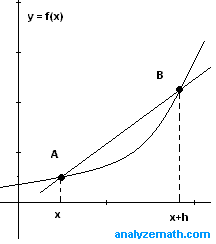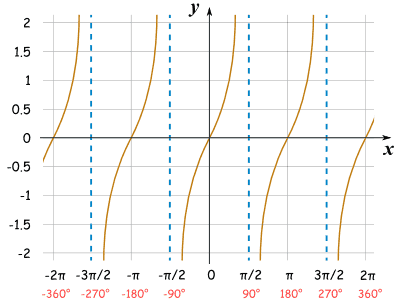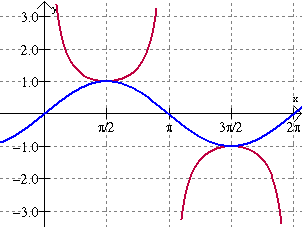What is continuity? What is discontinuity?
Continuity is a term used to describe a function that you can draw without any breaks or stops, meaning your pencil does not lift from the paper. That means that there are no hole, no breaks, and no vertical asymptotes to halt the function.
Discontinuity is where there are those aforementioned terminologies which include point, jump, oscillating, and infinite discontinuities as well as oscillating behavior. These continuities fall under two categories: removable and non-removable discontinuities.
Removable discontinuities consist of point discontinuities, which are also known as hole discontinuities. An open point is a characteristic of this discontinuity without any point above or below the y-coordinate. a function exists at this point on a function of a graph.
http://www.ck12.org/book/CK-12-PreCalculus-Concepts/r508/section/1.10/
Non-removable discontinuities consist of:
-Jump Discontinuites which are characteristic of two points, 1 closed 1 open or two open, on top and bottom of one another and part of different functions. The reason why this is a discontinuity is because to construct the whole graph, one would need to life his or her pencil off the paper to continue drawing the graph. There is a jump in the graph.
http://www.sagemath.org/calctut/inflimits.html
-Oscillating Behavior is when there is a wiggly function on the graph. There is little to explain other than this picture below.
http://www.sagemath.org/calctut/inflimits.html
-Infinite Discontinuity is where there is a vertical asymptote that caused the graph to go to infinity and beyond...upwards and downwards. There is unbounded behavior when this occurs as the graph can reach indefinitely infinity where it increases or decreases without any bounds at all.
What is a limit?
A limit is basically the intended height of a function. We have a specific equation for this with lim f(x)=L with x->#. This equation is equivalent to saying the limit as x approaches a # of f(x) is equal to L. We never reach the limit because there are an infinite amount of values that we can write before we can actually reach the limit. An example would be reaching 2. From the left we would list values of 1.9, 1.99, 1.99, and etc., but we can never actually reach 2 because for all we know we can write 1.99999999999999999999999999999999999999999999999999999999999999999999999999999999999999999999999999999999999999999999999999999999999999999999999999999999999999999999999999999999999999999999999999999999999999999999999999999999999999999999999999.
By using a limit, we don't get the perfect answer. However, we want to fix and upgrade the values we want to make it close to being the perfect answer. The limit is very similar to what we want to find which is the instant change rate on the graph.
How do we evaluate limits numerically, graphically, and algebraically?
In order to evaluate limits numerically, a table must be drawn. There are 3 values of a number that should be listed to the left and right of the designated number, respectively. The ideal difference that should be shared between the middle # and the most left and most right numbers should be a tenth, 0.1. The trick here is dealing with negative numbers. If we take -2, for example, the left number should not be -1.9, because that although that would be true for a positive 2, the left side must have a number that is lower than the designated value. -2.1 would therefore be the correct answer for the left of -2. Afterwards, you basically add a digit to the decimal place and get -2.01 in order to begin getting closer to the limit. The point here is that you do even though we do not get to the limit, we get closer and closer to it.
To evaluate a limit graphically, we would draw the graph by inputting the function into the table.We would then place the point of our pencil on the graph at a position where the point is to the right of where x=a. We would then move the point along the graph to x=a from the right of the graph. Whatever value the y-coordinate approaches should be where our limit is. We do the same thing except from the left of x=a.
Evaluating a limit algebraically we can use three methods:
-Direct substitution. Sometimes merely inputting the value of the limit can yield results we want. If we get a an answer that is not 0/0, which means indeterminate form, then we are done. However, when 0/0 is the case, we need to utilize other methods.
-Factoring. We can factor out the numerator and denominator the best we can and when we get a more simplified equation, we can then plug in the value of the limit to find our answer.
-Conjugating. We can multiply the top and bottom by the conjugate to find the limit. By multiplying the numerator and denominator, we are attempting to do the same thing as factoring. We are trying to cancel anything from the equation in order to further simplify it to then use substitution to get our answer.
http://www.ck12.org/book/CK-12-PreCalculus-Concepts/r508/section/1.10/
http://www.sagemath.org/calctut/inflimits.html
http://idiotsguides.com/static/quickguides/math/calculus-101-what-is-a-limit.html
http://people.hofstra.edu/stefan_waner/realworld/tutorials/frames2_6b.html
http://www.mathsisfun.com/calculus/limits-evaluating.html











